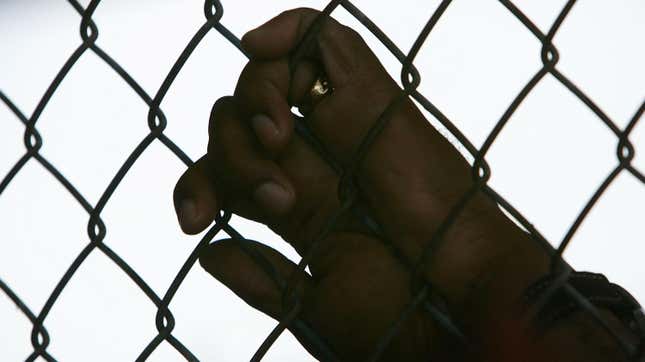
New research out Tuesday supports fears that at least some prisons in the U.S. have been a breeding ground for the pandemic. The study found a link between increased cases of covid-19 during the first wave last year and counties where state prisons were located. Most of these cases were likely the result of the pandemic spilling over from prisons into surrounding communities, the authors say.
Even before the pandemic, public health experts and advocates have worried about the heightened risk of infectious diseases in prisons and jails. Incarcerated people tend to live in cramped spaces with substandard health care and are often in poorer health than the general population—perfect conditions for an already highly contagious germ like the coronavirus to spread.
During the pandemic, there have been numerous, sometimes large, outbreaks of covid-19 inside prisons and jails, and even the Centers for Disease Control and Prevention has stated that incarcerated people face a greater risk of contracting covid-19 than the average person. This vulnerability prompted some states such as California to prioritize vaccination campaigns inside the prison during the initial rollout of the vaccines early this year.
According to the Covid Prison Project, a database created by public health researchers, at least a half million cases of covid-19 have occurred inside U.S. prisons so far, including both incarcerated people and staff, while at least 2,500 incarcerated people have died as a result (both underestimates). But this new research, published in the American Journal of Public Health, tries to quantify the broader impact that these outbreaks may have had outside prison walls.
Researchers from the University of Wisconsin-Madison looked at data on covid-19 cases across the U.S. reported during the spring of 2020 and focused on comparing counties with prisons and jails to those without them. After controlling for other variables linked to covid-19 spread, like nearby nursing homes or population density, they found a clear link between having a state prison in the area and increased covid-19 cases.
All told, they estimated that counties with these prisons were associated with 11% more covid-19 cases up until July 2020. And though they didn’t have more specific data on how many cases exactly occurred inside prisons, they estimated that around 70% of these added cases were from the community, with outbreaks having likely been introduced through contact with incarcerated individuals or staff members. In raw numbers, they calculated that state prisons throughout the country contributed to 95,000 more cases and over 3,300 deaths outside prison during the first wave.
“Our big takeaway from this research is that prisons are a particularly vulnerable type of facility when it comes to risk for disease spread, which may add additional stress to rural healthcare systems that are already struggling to cope with the pandemic,” study author Kaitlyn Sims, a doctoral student in agricultural and applied economics at UW–Madison, told Gizmodo in an email.
This sort of research can’t show a direct causal relationship between prisons and more covid-19. But the findings do support past studies of individual areas where prison-related outbreaks appeared to fuel further cases in the community. And it also points to potential interventions for keeping the pandemic contained in and out of prisons moving forward. The team didn’t find any association between federal prisons (or county jails) and increased covid-19, for instance, which might be because federal prisons took earlier action in April 2020 to limit contact between people, the authors speculated. At the same time, incarcerated people have spoken out about the mistreatment they’ve faced during the pandemic, sometimes in the name of safety.
Sims says that the people living and working inside prisons should be given added support during the pandemic, similar to but distinct from other populations at high risk for covid-19.
“The significant relationship between prison presence and covid-19 spread that we find underscores the need for policymakers to consider how the specific needs of incarcerated persons and corrections officers may differ from individuals in other congregate living facilities, such as nursing homes.”
Since last year, for instance, some states and the federal government have been successfully pressured to reduce the prison population, either through commuting the sentences of nonviolent offenders or by releasing them to home confinement. But while experts have lauded these efforts for both reducing the risk of covid-19 and improving the lives of incarcerated people and their families, the grace period may be coming to an end as the pandemic continues to wind down in the U.S.. As reported by the New York Times this week, around 4,000 people on home confinement are expected to be sent back to federal prison soon, barring any last-minute reprieve from the Biden administration.
Sims says her team is more than open to keep looking at the link between prisons and covid-19 in the future, “especially as new data comes out to better examine the effects of the pandemic.”